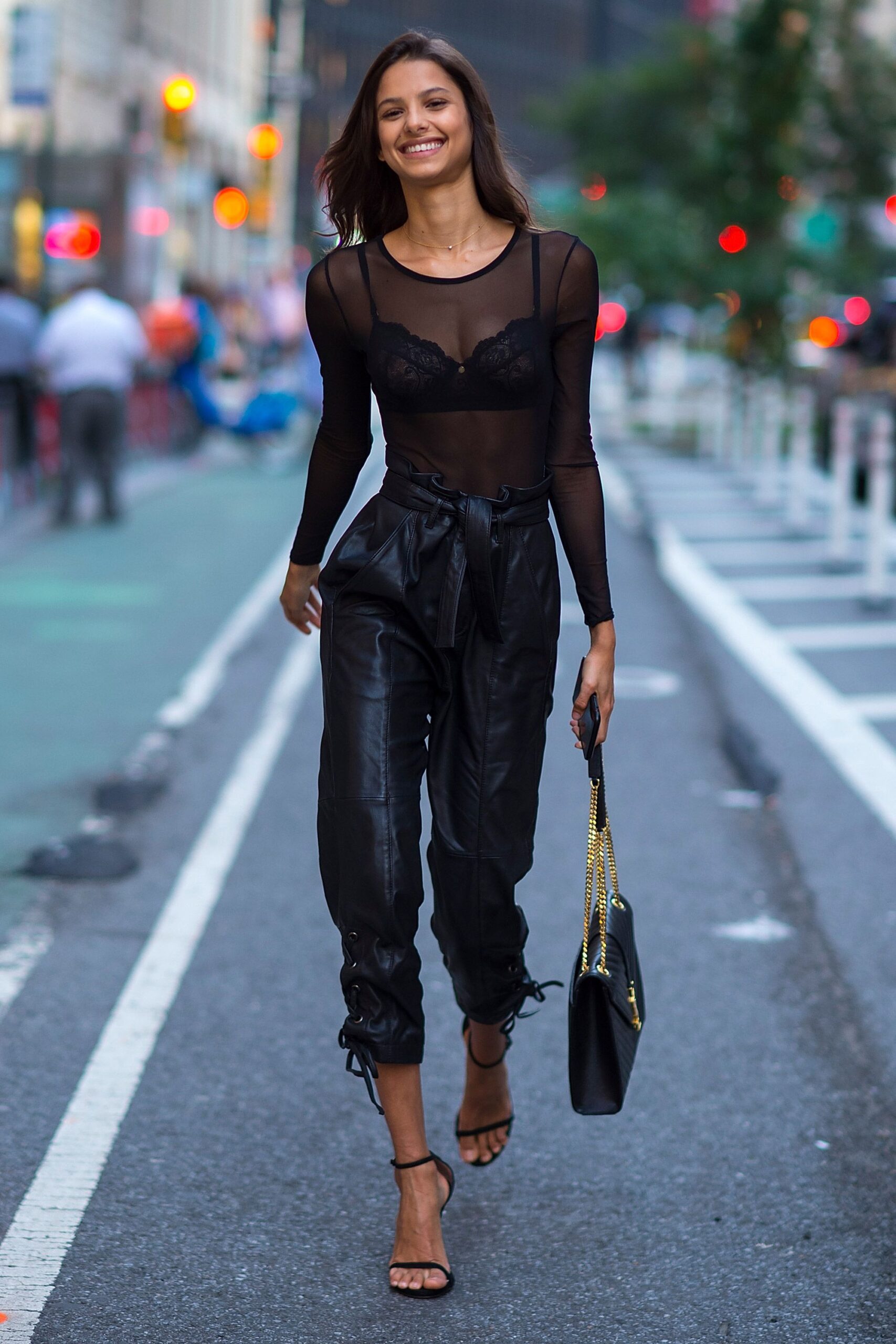
When a fashion show is over, if you stay around long enough, you’ll watch the rush of models leaving backstage in their everyday attire. There will always be a swarm of photographers and journalists waiting outside, ready to take pictures and make notes about the clothing brands the girls are sporting like fans around a stage entrance on Broadway. Models like Soo Joo Park and Hanne Gaby Odiele, who dress and pose with character, will also spark a mob scene, in addition to the Karlie’s, Kendalls, and Gigis. When Alexander Wang — or M.O.D. for short — used it to characterize his slouchy, downtown aesthetic and the leggy heroines who inspired it in 2006, the word “model off duty” entered the fashion language.
The term “model off duty” gained popularity along with Wang’s business, and the effortless-glamorous woman wearing a loose T-shirt and black skinny jeans became a recognized figure. Despite this, she has remained as mysterious as ever. (After all, the M.O.D. ensemble’s dirty little secret is that when worn by regular people, most of its cachet is lost.)
At that time, street-style blogs were also starting to gain popularity. When Scott Schuman launched The Sartorialist, he posted images of fashionable New Yorkers as well as the occasional group of models as they were waiting for castings. Soon after, Facehunter, Stockholm Street Style, Tommy Ton’s Jak & Jil, Street Peeper, and hundreds of other apps entered the market that had previously been dominated by Bill Cunningham of The New York Times. I saved every image of my favorite models wearing their clothes that I could find online as a fashion-obsessed teenager in Toronto (a rarity at the time). Photos of models backstage or outside the shows were, in a way, humanizing before street style; they served as a reminder that even Calvin Klein’s dazzling Russian sylphs frequently appeared to be ordinary, clumsily dressed teens outside the runway.
The writer, stylist, and street style icon Natalie Joos, who runs the website Tales of Endearment, recalls that having personal style was not a requirement when she opened her casting agency in New York City in 2003. As a fashion-obsessed adolescent in Toronto (a rarity), I saved every image of my favorite models wearing their clothes that I could locate online.
Street style and Instagram both saw a rise in popularity, and this made models and their agencies more aware of the importance of projecting a consistent overall image. According to Marissa Surmenkow, head of scouting and development at Wilhelmina Models, “How a model displays herself is incredibly crucial, not just for the client but because social media is such a pervasive aspect of our industry.” “Consumers are interested in seeing how the models dress daily as they become more common and recognizable. In the past, models might have worn black narrow jeans and a black tank top as part of a stricter “model uniform.” The clientele now, I believe, also wants to see the personalities of the females, and it’s crucial to see how they express themselves via style. This entails searching for females that have the full package when the team is out scouting—personality, sense of fashion, and interests outside of modeling—in addition to ticking the boxes for height, dimensions, and that elusive “look.” But while some people have an excellent taste from the start, others require some guidance.
According to Surmenkow, “We have a whole team that’s dedicated to that part of development. So when the girl comes in on day one, we’re going through her wardrobe, identifying really great pieces that she already has that can complement her shape and look good for casting, and then other pieces that would be great for street style as she’s going to and from shows,” The agency partners with emerging designers to outfit models for Fashion Week, and some of these striking items are the result of their collaborations. Models get to wear items that will catch the eye of photographers, while designers get the chance to gain visibility. It’s a win-win situation similar to what many bloggers have with labels for street-style clothing (on someone who is pretty much guaranteed to look good in their clothes). Given that the majority of new models in New York City don’t have much money to spend on clothing, it’s also a cost-effective choice. There is a belief that you need to “appear expensive to book expensive. To attract photographers, brands would also give away free merchandise to their models after shows. If you’re wondering why that DKNY slogan hoodie seemed to be everywhere, be assured that it wasn’t by chance. It also seems natural that photographers would be keen to focus their cameras on the professionally photogenic females outside the shows who were sporting just-off-the-runway hair and makeup, given how editorial street-style trends have evolved.
